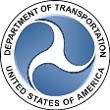
The Ultimate Guide to Car Transport: A Comprehensive Overview
Moving a vehicle across state lines or across the country can be a daunting task. Whether you’re relocating for a new job, purchasing a vehicle online, or sending a car to a family member, understanding car transport options is crucial for a smooth experience. This comprehensive guide covers everything you need to know about the car shipping process.
Understanding Your Car Transport Options
When it comes to transporting your vehicle, you generally have two main options: open transport and enclosed transport.
Open Transport: This is the most common and economical option. Your vehicle is transported on an open carrier along with several other vehicles. While this exposes your car to the elements, it’s perfectly suitable for most standard vehicles and typically costs 30-40% less than enclosed shipping.
Enclosed Transport: For luxury, classic, or high-value vehicles, enclosed transport offers additional protection. Your vehicle travels in a fully enclosed trailer, shielded from weather conditions and road debris. This premium service provides peace of mind for valuable automobiles.
Factors Affecting Car Transport Costs
Several key factors influence the price you’ll pay:
- Distance: Longer distances generally cost more overall but less per mile.
- Vehicle size and weight: Larger, heavier vehicles require more fuel and space.
- Transport type: Enclosed shipping costs more than open transport.
- Pickup and delivery locations: Rural areas may incur additional fees.
- Seasonal fluctuations: Summer months and January typically see higher prices.
- Vehicle condition: Non-running vehicles require additional equipment and labor.
Preparing Your Vehicle for Transport
Proper preparation ensures a smooth transport process:
- Clean your vehicle inside and out for accurate inspection documentation.
- Remove personal belongings (most companies prohibit shipping personal items).
- Leave only about a quarter tank of gas.
- Disable car alarms and remove toll passes.
- Document existing damage with photos and notes.
- Check for and fix fluid leaks.
- Remove custom accessories that might be damaged during transport.
The Car Transport Timeline
Understanding the typical timeline helps set expectations:
- Booking: 1-7 days in advance (more notice is better)
- Vehicle pickup: Most carriers provide a 1-3 day pickup window
- Transit time: Typically 1-9 days depending on distance
- East to West Coast: 7-10 days
- Mid-country routes: 3-7 days
- Regional transport: 1-3 days
Choosing a Reputable Transport Company
The carrier you choose significantly impacts your experience. Look for:
- Valid DOT and MC numbers that can be verified
- Appropriate insurance coverage
- Positive customer reviews across multiple platforms
- Clear, detailed contracts without hidden fees
- Responsive customer service
- Industry affiliations with organizations like the Better Business Bureau
Insurance and Protection During Transport
While damage during professional transport is rare, understanding coverage is important:
- Verify the carrier’s insurance policy details and coverage limits
- Understand what’s covered and what exceptions exist
- Consider whether your personal auto insurance provides any supplemental coverage
- Document your vehicle’s condition before transport with dated photos
Door-to-Door vs. Terminal-to-Terminal
Door-to-Door: The carrier picks up and delivers your vehicle as close to your specified addresses as possible, considering truck access limitations. This convenient option is now standard with most companies.
Terminal-to-Terminal: You drop off and pick up your vehicle at designated facilities. While potentially less expensive, this option involves more effort and possible storage fees.
Special Considerations
Some scenarios require additional planning:
- International shipping: Requires customs documentation and may involve sea freight
- Classic car transport: Often benefits from specialized carriers with experience handling valuable vehicles
- Motorcycle transport: Usually requires specific equipment and securing methods
- Military relocations: May qualify for special rates or government-contracted services
Final Tips for a Successful Car Transport
- Book early, especially during peak seasons
- Be flexible with pickup and delivery dates when possible
- Ask detailed questions about the carrier’s process
- Keep communication channels open during transport
- Have a contingency plan for potential delays
- Conduct a thorough inspection at delivery before signing acceptance documents
By understanding these aspects of car transport, you can make informed decisions and ensure your vehicle arrives safely at its destination. Remember that price shouldn’t be the only consideration—reliability and proper protection for your vehicle are equally important factors in choosing the right service. Call 855-723-3200 for your free quote today!








